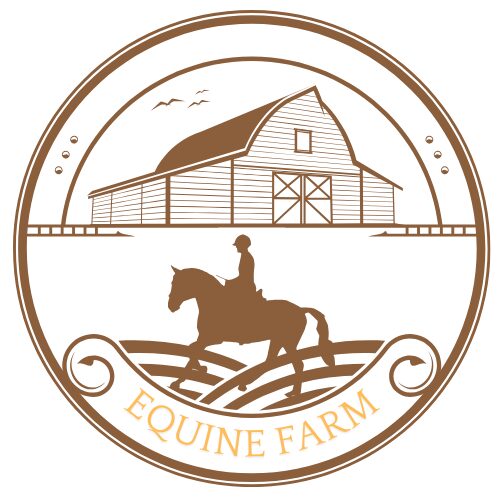From feed and water management to automation and technological advancements, the world of horse stables is evolving rapidly.
Our exploration will cover the essential equipment for modern stables, improvements in daily management through technological tools, and the impact of such stable equipment on horse safety and comfort.
Whether setting up a new stable or upgrading existing equipment, we will provide insights into the transformative effects of advanced stable technologies.
Learn how innovations like automated feeders and smart monitoring systems are revolutionising equine care and management, shaping the future of stable operations.
What Is the Most Essential Equipment for Modern Stables?
In equine management, horse owners require essential gear such as smart halters and GPS trackers to enhance care efficiency and the overall well-being of their horses.
Smart equipment offers real-time health and performance data, allowing owners to monitor their horses remotely. These tools are pivotal in detecting health issues early, maintaining the horses’ comfort, and optimising stable operations.
How Does Equipment Improve Daily Stable Management?
The introduction of performance software in stables enables barn managers to monitor key metrics like health records and feeding schedules efficiently.
This technology integration facilitates informed decision-making, optimising horse care, and performance. It’s a step forward in managing daily stable duties more effectively, setting the stage for exploring the latest technological advancements in stable equipment.
What Are the Latest Technological Advancements in Stable Equipment?
Revolutionary equine software and automated systems transform stable management by simplifying routine tasks and enhancing horse care. Automated feeding systems and health monitoring devices allow for precise management of diet and exercise, improving each horse’s well-being. These advancements highlight the role of automation in modern stable management, enhancing both efficiency and effectiveness.
How Can Automation Aid in Stable Management?
Automation enhances stable management by streamlining tasks like feeding and cleaning and improving overall horse care through advanced monitoring systems.
These technologies ensure horses receive customised nutrition and maintain optimal health, reducing manual labour and allowing stable staff to focus on higher-level management tasks.
The transition from traditional methods to automated solutions brings us to the considerations necessary when setting up a new stable.
What Should You Consider When Setting Up a New Stable?
Setting up a new stable requires careful planning of facilities and breeding programs to create a functional environment. Essential considerations include designing for adequate ventilation, secure fencing, and appropriate water systems.
Additionally, a strategic breeding program is vital for stable success, ensuring the health and lineage of the horses. These foundational decisions directly influence the safety and comfort provided by the stable equipment.
How Does Stable Equipment Impact Horse Safety and Comfort?
Equipment designed for horse safety and comfort, such as protective vests and specialised hoof boots, is important in preventing injuries and enhancing comfort during riding.
Advanced safety gear ensures rider and horse protection, especially in challenging environments. This commitment to safety and comfort extends into managing feed and water, which are crucial for stable operations.
What Are Some Innovative Tools for Feed and Water Management?
Technological innovations like automated feeders and smart water monitors revolutionise how horse owners manage their horses’ dietary and hydration needs.
These tools allow for precise control over feeding schedules and quick responses to potential water issues, ensuring horses receive optimal nutrition and hydration. Such advancements in equipment choice are essential for maintaining stable operational integrity and reliability.
How Do You Choose Durable and Reliable Stable Equipment?
Selecting stable equipment requires attention to material quality, brand reputation, and the specific needs of the horses. Durable, reliable equipment enhances stable performance and horse welfare, underlining the importance of informed purchasing decisions. Addressing these equipment needs leads us to the challenges of maintaining such high-quality, stable gear.
What Are the Common Challenges in Maintaining Stable Equipment?
Maintaining stable equipment involves overcoming challenges like weather-induced wear and the need for regular updates and repairs. Effective maintenance strategies, such as regular inspections and protective storage solutions, help extend the equipment’s life and ensure its reliability. Proper maintenance is important as it effectively supports the training for advanced stable equipment.
Where Can You Find Training for Using Advanced Stable Equipment?
Training resources for advanced stable equipment include online courses, hands-on workshops, and industry conferences, which provide essential knowledge and skills to horse owners and barn managers.
These training opportunities are essential for effectively utilising new technologies and improving stable management practices. As we look toward the future, these educational resources will play a pivotal role in adapting to emerging trends in stable technology.
What Future Trends Are Emerging in Stable Equipment?
Emerging trends in stable equipment, such as IoT integration and cloud-based management systems, promise to enhance stable operations and horse care further.
Technologies like EquineTrac demonstrate how real-time data and connectivity can streamline management practices and improve communication among care teams. This continual evolution in stable equipment paves the way for a reflective look at how these advancements have reshaped the equine industry.
End of the Trail: Reflecting on the Impact of Advanced Stable Equipment
Reflecting on the integration of advanced stable equipment, it’s clear that these technologies have profoundly improved horse care and stable management.
Innovations like automated feeding systems and health monitoring devices have simplified daily tasks and ensured the ongoing health and safety of horses, proving indispensable in modern equine care practices. As we consider the future, the impact of these technologies continues to drive improvements in stable efficiency and horse welfare, marking a notable evolution in the field.

